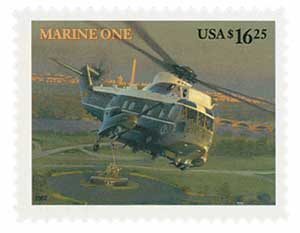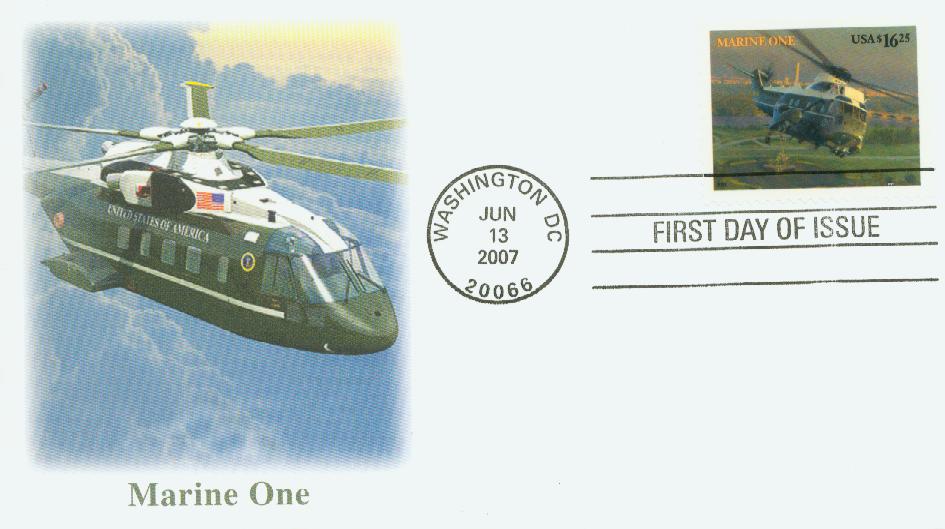2007 $4.60 Air Force One
Priority Mail
City: Washington, DC
First Air Force One Christened
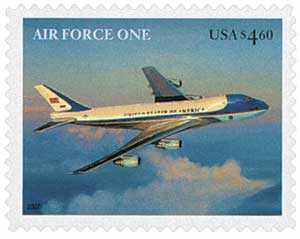
On November 24, 1954, First Lady Mamie Eisenhower christened the first plane to be designated Air Force One.
Decades earlier, Theodore Roosevelt became the first US president to fly in an airplane. The flight came after his time as president, on October 11, 1910. On that occasion, he rode in an airplane piloted by Arch Hoxsey at a county fair in St. Louis.
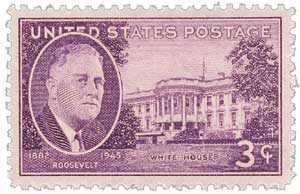
It would be several years before a sitting president would fly. But by the 1930s, the technology had improved enough to make presidential air travel relatively safe and reliable. In 1933, Franklin Roosevelt’s administration received a Douglas Dolphin, the first aircraft bought specifically for presidential travel, though there are no records indicating Roosevelt ever flew on the plane. In 1943, he flew aboard the Dixie Clipper Boeing 314 Flying Boat to the Casablanca Conference in Morocco – a 5,500-mile trip.
The US Army Air Forces didn’t want the president to have to rely on commercial airlines for his travel, so they ordered a C-87A military aircraft be converted for his use. But the plane had a questionable safety record and the president never used it, though some of the people in his cabinet would use it.
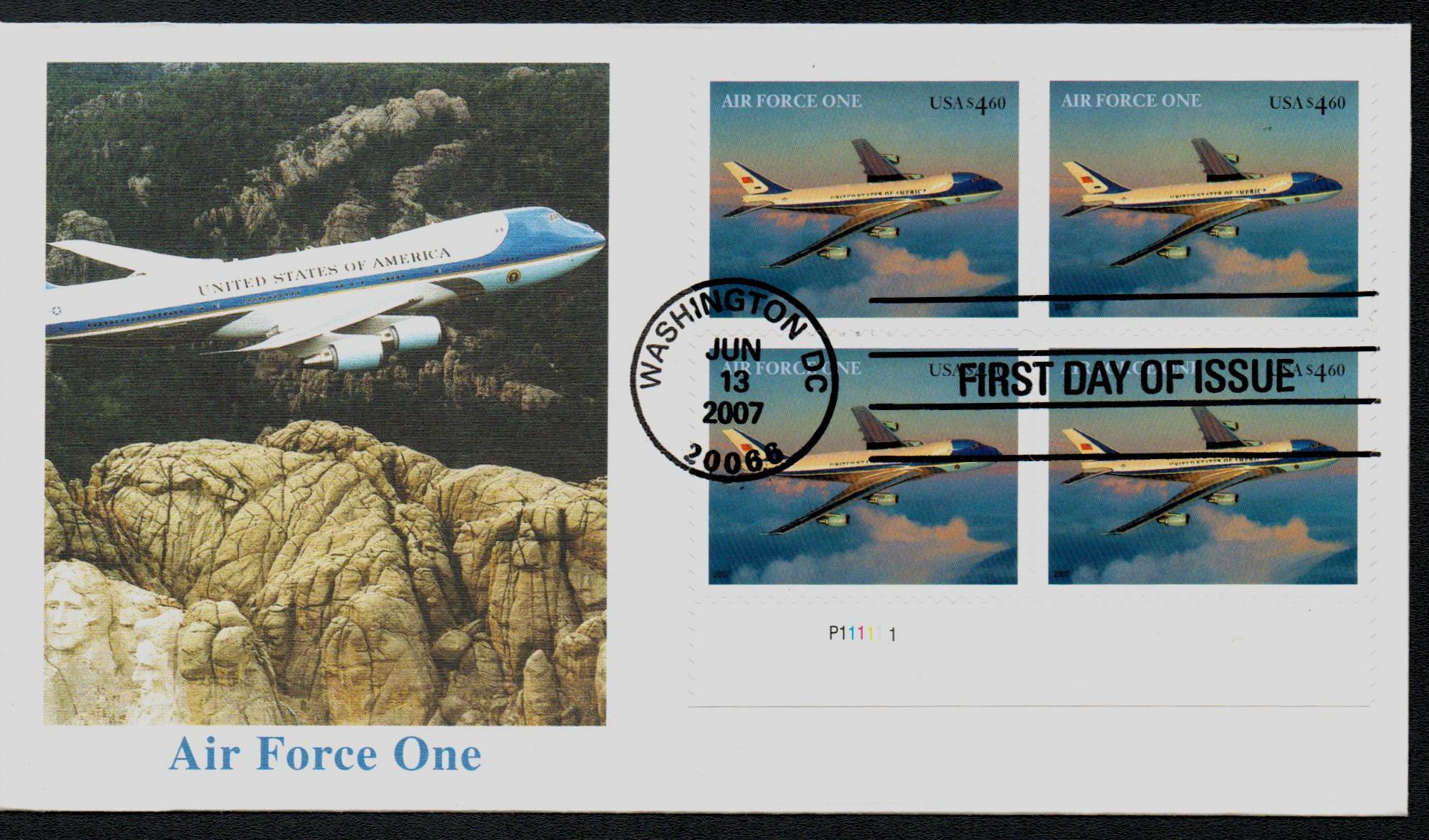
Eventually, the Secret Service acquired and upgraded a C-54 Skymaster for Roosevelt’s use. Nicknamed Sacred Cow, it had a sleeping area, radio telephone, and a retractable elevator to lift Roosevelt in his wheelchair into the plane. Roosevelt flew in the plane once before his death, to the Yalta Conference in February 1945.
After Roosevelt’s death, Harry Truman replaced the presidential aircraft with a C-118 Liftmaster named Independence (after his Missouri hometown). The Independence had a distinctive bald eagle head painted on the nose.
Then in 1953, two planes nearly collided over New York City. One was Eastern Airlines flight 8610 and the other was Air Force flight 8610. Because they had the same call sign, they entered the same airspace and nearly collided. After this incident, it was decided that the president’s plane should have its own unique call sign, Air Force One.
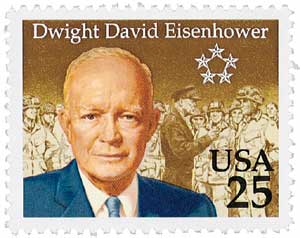
At the time, Dwight Eisenhower used Lockheed C-121 Constellations, which he called Columbine I and II, after the state flower of Colorado. After the near collision in 1953, the Columbine II was called Air Force One. Then on November 24, 1954, a new upgraded Constellation was brought into service for the president. This was the first plane to be christened Air Force One from the start of its service. First Lady Mamie Eisenhower christened the plane with a bottle of Rocky Mountain spring water from Colorado.
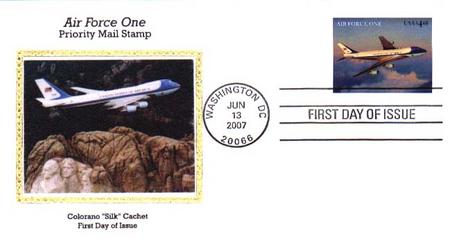
Later in Eisenhower’s term, the Air Force acquired three Boeing 707 jets, one of which he flew on a 22,000-mile “Flight to Peace” goodwill tour to 11 Asian nations. During John F. Kennedy’s presidency, industrial designer Raymond Loewy redesigned the presidential aircraft, adopting a popular design with the country’s name spaced out widely along the side of the plane accompanied by the presidential seal and the US flag.
During Ronald Reagan’s administration, two Boeing 747s were ordered to replace the older 707s in use at the time. The newer aircraft are considered traveling White Houses. If there were an attack on the US, the President could remain airborne and continue his duties.
Eisenhower’s administration also marked the first time helicopters were used to transport the president. He needed a faster way to reach his summer home in Pennsylvania and Air Force One couldn’t land at the White House or his summer home. The first presidential helicopter was a Sikorsky UH-34 Seahorse. Up until 1976, the Marine Corps and the US Army shared the responsibility of presidential helicopter transport. Since then, the Marines have solely handled this, which is why it’s called Marine One.











